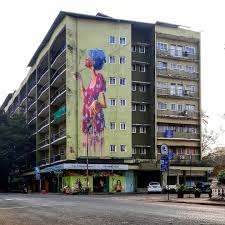The enduring legacy of Junta House, once Goa’s tallest building now deemed unsafe

In the heart of Panaji, Goa’s lively capital, stands an aging but iconic structure—Junta House. Once a modern marvel and the tallest building in the state, it now awaits demolition. Authorities have deemed it structurally unsafe, yet its memory continues to live on. Junta House isn’t just a government building; it’s a piece of Goa’s post-liberation identity.
A Symbol of New Beginnings
Back in 1966, Junta House rose as a symbol of Goa’s modern aspirations. After the liberation from Portuguese rule in 1961, the newly freed state needed infrastructure to reflect its changing future. Leaders like Lt Governor K.R. Damle and Chief Minister Dayanand Bandodkar inaugurated the six-storey structure to signal progress and optimism.
At the time, Junta House didn’t just break height records. It introduced new technology, such as one of Goa’s first elevators. People traveled from nearby towns just to experience this modern marvel. Clearly, the building represented more than brick and concrete—it reflected a turning point in Goa’s journey.
A Vibrant Hub in Panaji
From the very beginning, Junta House served multiple purposes. Government offices like the Regional Transport Office, Civil Supplies, and Forest Department operated within its walls. Additionally, it housed retail stores, residential flats for IAS officers, a cultural auditorium, and even a small observatory.
As a result, Junta House became a key gathering point. Shoppers, students, officials, and tourists passed through daily. Some attended public events in the hall, while others lived there and worked just a floor away. This diversity made the building not only useful but also central to everyday life in Panaji.
Years of Decline
Despite its legacy, Junta House didn’t receive the care it deserved. Over time, maintenance issues began to pile up. Leaky ceilings, cracked slabs, rusted railings, and malfunctioning elevators made the structure increasingly hazardous.
Most recently, part of the UPS room ceiling collapsed, alerting authorities to just how serious the risks had become. Fortunately, no one was injured, but the incident triggered a full structural audit.
After a detailed inspection, the Public Works Department confirmed that the building had become unsafe. They concluded that repairs wouldn’t be cost-effective. This finding forced the administration to take immediate action.
Evacuation Order Sparks Public Reaction
Soon after the report, the North Goa Collector ordered a full evacuation within 30 days. As expected, this decision sparked concern among tenants, shopkeepers, and government staff. Many had worked in Junta House for decades and now faced relocation without a clear roadmap.
Although the government promised support, many occupants expressed disappointment. They argued that regular maintenance could have prevented the deterioration. Some demanded compensation, while others asked for better communication regarding their relocation plans.
Clearly, the abruptness of the decision left many feeling neglected.
Plans for Redevelopment
While eviction poses short-term challenges, long-term redevelopment plans offer hope. The Goa government partnered with NBCC (India) Ltd, assigning them the redevelopment of six major government properties—Junta House included. This massive project, estimated at ₹10,000 crore, aims to revitalize old infrastructure without dipping into state funds.
Importantly, the new plan includes updated facilities such as parking spaces, modern offices, and enhanced safety systems. Officials assure that the redevelopment will reflect both Panaji’s character and modern needs.
Even so, heritage lovers remain cautious. They believe that redevelopment must honor the legacy of the original structure. For them, Junta House is not just a building; it represents Goa’s coming-of-age moment after Portuguese rule.
The Emotional Connection
To understand the true impact of Junta House, one must listen to the people who grew up around it. Several older residents recall playing around its staircases or riding the elevator for the first time. For others, it was a place where they started their first job or opened their first store.
One former civil servant said, “It wasn’t just a workplace. It was where I met lifelong friends, where I grew professionally, and where my children watched Republic Day functions from the top floor.”
In these memories, Junta House becomes more than a building—it becomes a community.
Changing Urban Landscape
Goa’s cities are rapidly evolving. Old Portuguese villas make way for high-rises, and colonial-style structures compete with modern glass buildings. In this shifting landscape, Junta House represents a critical moment of transition.
Its fall mirrors the broader dilemma that many Indian cities face: how to modernize without erasing history. If done thoughtfully, the new Junta House could become a symbol of smart urban planning that balances both preservation and progress.
Final Thoughts
Although Junta House no longer serves its original purpose, its role in shaping Goa’s administrative and architectural narrative remains significant. Its demolition, though necessary for safety, should not mean the end of its story.
By building responsibly and honoring the structure’s past, Goa has the chance to celebrate its journey—from colonial past to modern statehood—through a renewed symbol of growth.
Let the old building rest, but let its memory inspire the future.






